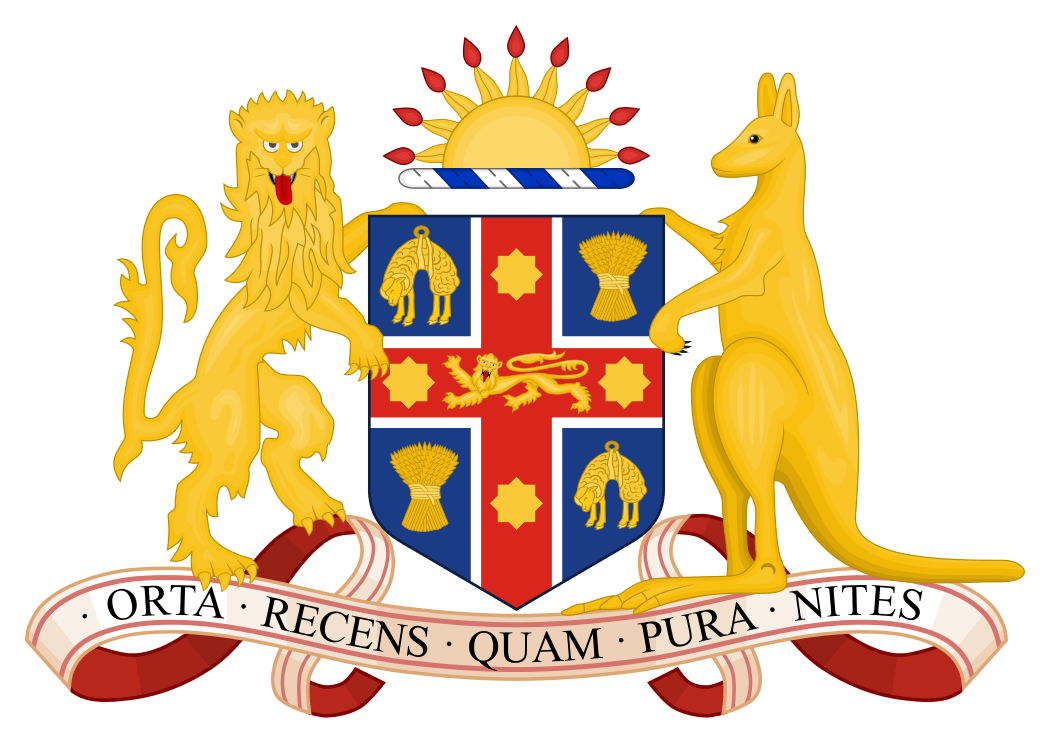Local Government (Areas) Act 1948
| Local Government (Areas) Act 1948 | |
|---|---|
 | |
| An Act to unite the City of Sydney and certain areas and to constitute the united area as a city; to unite certain other areas or areas and parts of areas and to constitute the united areas as municipalities; to reconstitute the Sydney County Council; to repeal the Sydney Corporation Act 1932, and certain other Acts; to amend the Local Government Act 1919, and certain other Acts in certain respects; and for purposes connected therewith. | |
| Citation | 1948 No. 30 |
| Enacted by | Parliament of New South Wales |
| Date of Royal Assent | 3 September 1948 |
| Administered by | Department of Local Government |
| Introduced by | Joseph Cahill |
| Related legislation | |
|
Local Government Act 1919 Local Government Act 1993 | |
| Status: Repealed | |
Local Government (Areas) Act 1948 was a landmark New South Wales statute that was notable for its wide-ranging reforms for and amalgamations of the Local Government Areas of New South Wales. It was written and presented to parliament by the Minister for Local Government in the McGirr Government, Joseph Cahill.
Bill
In the post-war period of infrastructure development, the Labor Party government of James McGirr, led by Cahill, decided that Local Government reform would assist this process of improving state infstracture and community facilities. His vision for a local government reform agenda, including large-scale amalgamations, was made clear during a speech in Wollongong in July 1946: "the government has decided to enquire into the possibility of making [Local Government] areas more comprehensive. I know there will be criticism and this is a very controversial subject, but I urge you to take the broad view. A council with a small income cannot provide for the essential requirements of its citizens. Remember councils are not isolated or individual units to-day, but are part of a composite whole. This country needs to be developed, and if we are to hold it we need not seven million people, but thirty-seven or for forty-seven million. We believe we have the potential wealth for such a population and a start has to be made in planning to accommodate them."[1]
The text of the bill as passed by the Legislative Assembly originally set forth a reduction of the number of Sydney councils from 66 to 16. A gag on debate in the Legislative Assembly was used by the Government in order to prevent the opposition from trying to push through unfavourable amendments on this number within a specially convened select committee.[2] However, in order to pass the Legislative Council, this number was reduced to 40 instead.[3] however, Cahill's bill was not received without criticism from his own party, with the Labor Speaker of the Legislative Assembly, Bill Lamb, who was also the Member for Granville, making the unprecedented step of making representations in the committee stage of the bill, calling the bill a ""flagrant violation of the fundamental principles of the democratic system" which was a reference to the Council's decision to amalgamate Granville Council into Parramatta instead of the other way round.[3][4]
Effects of the Act
The act repealed the Sydney Corporation Act 1932 and for the first time made the City of Sydney, also significantly expanded with the abolition of several adjoining councils, subject to the main body of Local Government legislation in New South Wales, then constituted in the Local Government Act 1919".[5]
The act sought to abolish and amalgamate a significant number of inner-city municipalities into several larger ones. The specific amalgamations and their successors are listed here, from the schedule of the act:
| Councils abolished[6] | Council group |
|---|---|
| Alexandria, Darlington, Erskineville, The Glebe, Newtown, Paddington, Redfern, Waterloo | Sydney |
| Granville, Dundas, Ermington and Rydalmere | Parramatta |
| Castlereagh, St. Mary’s, Nepean (A Riding) | Penrith |
| Cabramatta and Canley Vale | Fairfield |
| Ingleburn | Campbelltown |
| Nepean (C Riding) | Camden |
| Lidcombe | Auburn |
| Enfield (West Ward) | Strathfield |
| Enfield (Central and East Wards) | Burwood |
| St. Peters, Petersham | Marrickville |
| Bexley | Rockdale |
| Annandale, Balmain | Leichhardt |
| Mascot | Botany |
| Richmond | Windsor |
| Eastwood | Ryde |
| Vaucluse | Woollahra |
| Nepean (B Riding) | Liverpool |
References
- ↑ "More Local Government Powers Require Larger Areas.". South Coast Times and Wollongong Argus (NSW : 1900 - 1954). NSW: National Library of Australia. 5 July 1946. p. 3. Retrieved 15 September 2015.
- ↑ "House Gags Local Areas Bill.". The Sydney Morning Herald (NSW : 1842 - 1954). NSW: National Library of Australia. 31 October 1947. p. 5. Retrieved 15 September 2015.
- 1 2 "40 SYDNEY AREAS.". The Sydney Morning Herald (NSW : 1842 - 1954). NSW: National Library of Australia. 18 August 1948. p. 2. Retrieved 15 September 2015.
- ↑ "LAMB LASHES OUT ON MUNICIPAL MERGER.". The Cumberland Argus and Fruitgrowers Advocate (Parramatta, NSW : 1888 - 1950). Parramatta, NSW: National Library of Australia. 25 August 1948. p. 2. Retrieved 15 September 2015.
- ↑ Pearson, Linda (1994). Local Government Law in New South Wales. Leichhardt: Federation Press. p. 2.
- ↑ "LOCAL GOVERNMENT (AREAS) ACT 1948 - SCHEDULE 1". New South Wales Repealed Acts - AustLII. Australasian Legal Information Institute. Retrieved 15 September 2015.